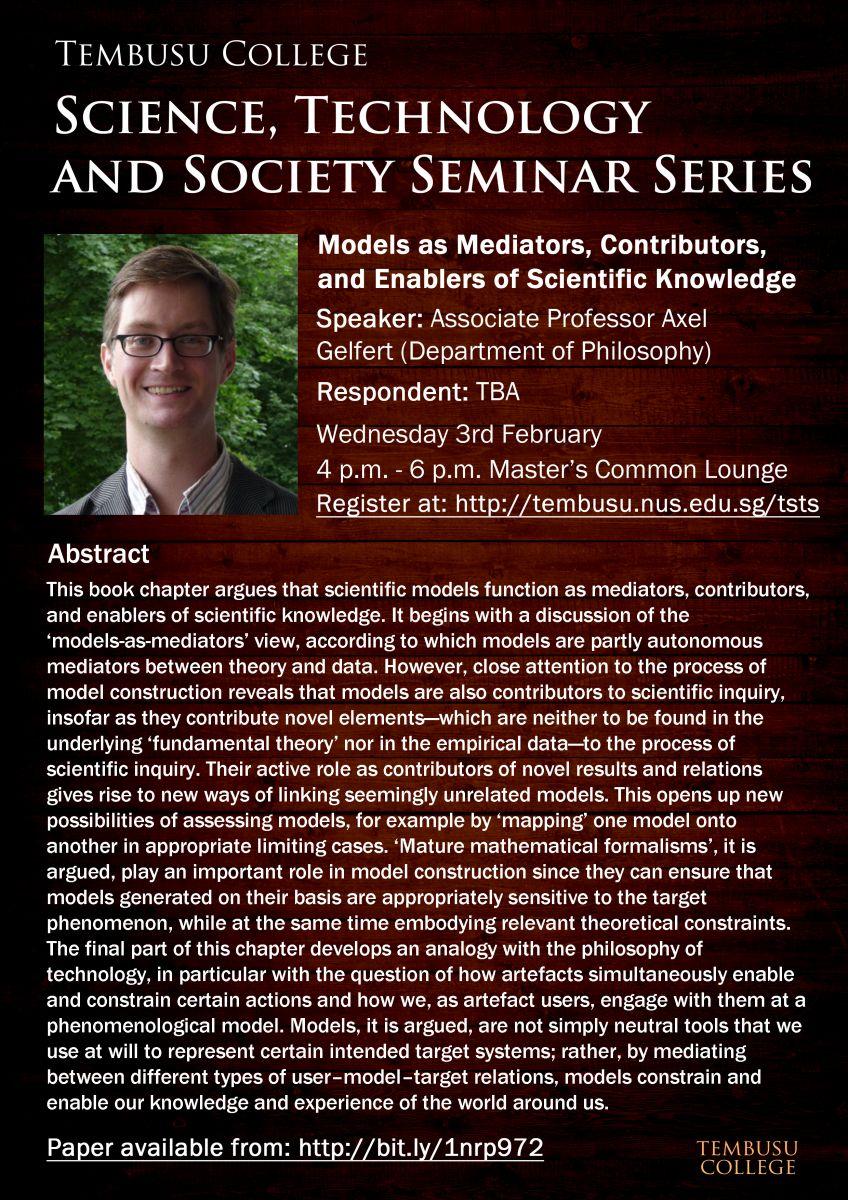
Tembusu College
Science, Technology and Society Seminar Series
Models as Mediators, Contributors, and Enablers of Scientific Knowledge
Speaker: Associate Professor Axel Gelfert (Department of Philosophy)
Respondent: TBA
Wednesday 3rd February
4-6pm Master’s Common Lounge
Abstract
This book chapter argues that scientific models function as mediators, contributors, and enablers of scientific knowledge. It begins with a discussion of the ‘models-as-mediators’ view, according to which models are partly autonomous mediators between theory and data. However, close attention to the process of model construction reveals that models are also contributors to scientific inquiry, insofar as they contribute novel elements – which are neither to be found in the underlying ‘fundamental theory’ nor in the empirical data – to the process of scientific inquiry. Their active role as contributors of novel results and relations gives rise to new ways of linking seemingly unrelated models. This opens up new possibilities of assessing models, for example by ‘mapping’ one model onto another in appropriate limiting cases. ‘Mature mathematical formalisms’, it is argues, play an important role in model construction since they can ensure that models generated on their basis are appropriately sensitive to the target phenomenon, while at the same time embodying relevant theoretical constraints. The final part of this chapter develops an analogy with the philosophy of technology, in particular with the question of how artefacts simultaneously enable and constrain certain actions and how we, as artefact users, engage with them at a phenomenological model. Models, it is argues, are not simply neutral tools that we use at will to represent certain intended target systems; rather, by mediating between different types of use-model-target relations, models constrain and enable our knowledge and experience of the world around us.tus nec ullamcorper mattis, pulvinar dapibus leo.


